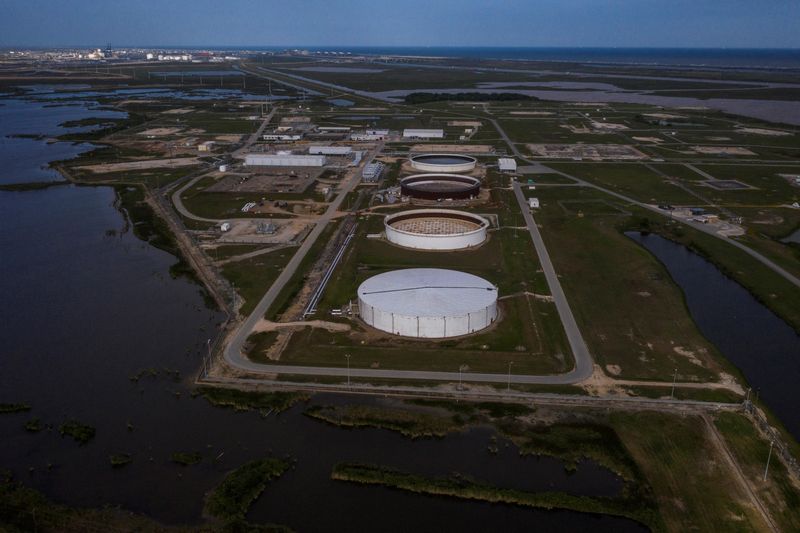By Scott DiSavino
(Reuters) -Crude prices eased about 1% on Friday on worries that global oil demand growth could be hit by a strong U.S. dollar and negative economic news from some parts of the world.
Prices declined despite signs of improving U.S. oil demand and falling fuel inventories that helped boost crude prices to a seven-week high a day earlier.
Brent futures fell 47 cents, or 0.6%, to settle at $85.24 a barrel, while U.S. West Texas Intermediate crude (WTI) ended 56 cents, or 0.7%, lower at $80.73.
The decline pushed WTI out of technically overbought territory for the first time in four days, while Brent futures remained overbought for a fourth day in a row for the first time since early April.
For the week, both crude benchmarks were up about 3% after gaining about 4% last week.
The U.S. dollar rose to a seven-week high versus a basket of other currencies with the Federal Reserve's patient approach to cutting interest rates contrasting with more dovish stances elsewhere.
The Fed hiked interest rates aggressively in 2022 and 2023 to tame a surge in inflation. The higher rates boosted borrowing costs for consumers and businesses, which can slow economic growth and reduce demand for oil.
A stronger U.S. dollar can also reduce demand for oil by making greenback-denominated commodities like oil more expensive for holders of other currencies.
In the world's biggest oil consumer, U.S. business activity crept up to a 26-month high in June amid a rebound in employment, but price pressures subsided considerably, offering hope that a recent slowdown in inflation was likely to be sustained.
U.S. existing home sales, however, fell for a third straight month in May as record-high prices and a resurgence in mortgage rates sidelined potential buyers.
Data from the U.S. Energy Information Administration on Thursday showed total product supplied, a proxy for oil demand, rose by 1.9 million barrels per day last week to 21.1 million barrels per day.
Despite the decline in crude prices, U.S. gasoline futures climbed for a fourth day to a one-month high on rising demand during the summer driving season and a drop in inventories.
MIXED GLOBAL DEMAND SIGNALS
In India, refiners processed nearly 1.3% more crude oil in May than a year earlier, provisional government data showed, while the share of Russian supplies in imports to India, the world's third biggest oil consumer, increased.
"Signs of stronger demand in Asia also boosted sentiment. Oil refineries across the region are bringing back some idled capacity after maintenance," analysts at ANZ Research said.
But in the euro zone, business growth slowed sharply this month as demand fell for the first time since February.
In China, the world's second biggest oil consumer, Beijing warned that escalating frictions with the European Union over electric vehicle imports could trigger a trade war.
Geopolitical tensions added to the mixed picture.
Ukraine's military said its drones struck four oil refineries, radar stations and other military objects in Russia.

The head of Lebanon's Hezbollah this week pledged a full-on conflict with Israel in the event of a cross-border war and also threatened EU member Cyprus for the first time.
In Ecuador, state oil company Petroecuador has declared force majeure over deliveries of Napo heavy crude for exports following the shutdown of a key pipeline and oil wells due to heavy rains.